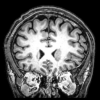Cancer drug reverses Alzheimer's disease in mice: Hope for humans?
Article Link: http://www.cbsnews.c...ope-for-humans/
(CBS) A new study of a promising Alzheimer's treatment has doctors buzzing that the drug may reverse the deadly neurodegenerative disease. But the new treatment isn't a new drug at all, rather a skin cancer pill that's been FDA-approved for more than a decade.
The drug, bexarotene, reversed signs of Alzheimer's in mice brains and also improved their memory in as little as 72 hours, according to the study.
"This is an unprecedented finding," study author Paige Cramer, a PhD candidate at Case Western Reserve School of Medicine, said in a university written statement. "Previously, the best existing treatment for Alzheimer's disease in mice required several months to reduce plaque in the brain."
Bexarotene - sold under the brand name Targretin - was approved by the FDA in 1999 for treating cutaneous T-cell lymphoma, a cancer of the white blood cells that primarily affects the skin. But the drug also happens to switch on a gene that makes a naturally occurring protein in the brain called Apolipoprotein E, or ApoE.
Previous research by study co-author Dr. Gary Landreth, a professor of neurosciences at Case Western Reserve, showed that ApoE could help facilitate the removal of amyloid beta proteins, which are a toxic substance in the brain that causes plaque buildup that's a marker for Alzheimer's.
Dr. Landreth and his grad student, Cramer, thought if they could use this drug to increase ApoE, then maybe they could reduce some of the plaques in mice that were genetically bred to have Alzheimer's. The researchers found that the drug caused a 50 percent reduction in the amount of amyloid plaques within only three days, and after 14 days, they saw a 75 percent reduction. The drug essentially "reprogrammed" the brain's immune cells to "eat" the amyloid plaques.
The brain plaque reduction was also associated with improvements in the rat's behavior. Mice instinctively make nests out of materials around them, but mice with Alzheimer's typically fail this task. But after 72 hours of bexarotene treatment, the Alzheimer's mice could build nests from tissue paper, and also performed better on other tests, which suggest a "clearer thought process," Cramer said in a university video.
The study is published in the Feb. 9 issue of the journal, Science.
One caveat to the study - mice aren't people. Despite how promising the findings may seem, the researchers tempered expectations.
"I want to say as loudly and clearly as possible that this was a study in mice, not in humans," Landreth told CNN. "We've fixed Alzheimer's in mice lots of times, so we need to move forward expeditiously but cautiously."
Dr. Maria C. Carrillo, director of scientific relations at the Alzheimer's Association agreed and told the Washington Post, "We need to be cautiously optimistic and pursue this lead as we would any other." But she added, "This an exciting study is that it involves a repurposed drug."
The researchers hope to get approval to study bexarotene in humans as soon as possible, and Landreth told the Post there's an urgency since he's heard from other doctors that patients are already asking about bexarotene.
"We've got to work fast, and we have got to be right," Landreth said. "We can't screw this up."
Alzheimer's is the sixth leading cause of death in the U.S., according to the CDC, taking more than 83,000 lives this past year. More than 5 million people already have Alzheimer's or related dementia, a number that is expected to more than double by 2050 because of the aging population, according to the Alzheimer's Association.
http://www.youtube.com/watch?v=HdYdYeNAYpU
Science Paper:
http://www.sciencema...science.1217697
ABSTRACT
Alzheimer's disease is associated with impaired clearance of β-amyloid from the brain, a process normally facilitated by apolipoprotein E (ApoE). ApoE expression is transcriptionally induced through the action of the nuclear receptors peroxisome proliferator activated receptor (PPARγ) and liver X receptors (LXR) in coordination with retinoid X receptors (RXR). Oral administration of the RXR agonist, bexarotene, to a murine model of Alzheimer's disease resulted in enhanced clearance of soluble Aβ within hours in an apoE-dependent manner. Aβ plaque area was reduced >50% within just 72 hours. Furthermore, bexarotene stimulated the rapid reversal of cognitive, social, and olfactory deficits and improved neural circuit function. Thus, RXR activation stimulates physiological Aβ clearance mechanisms, resulting in the very rapid reversal of a broad range of Aβ-induced deficits.
Edited by Elus, 10 February 2012 - 08:17 PM.
















































